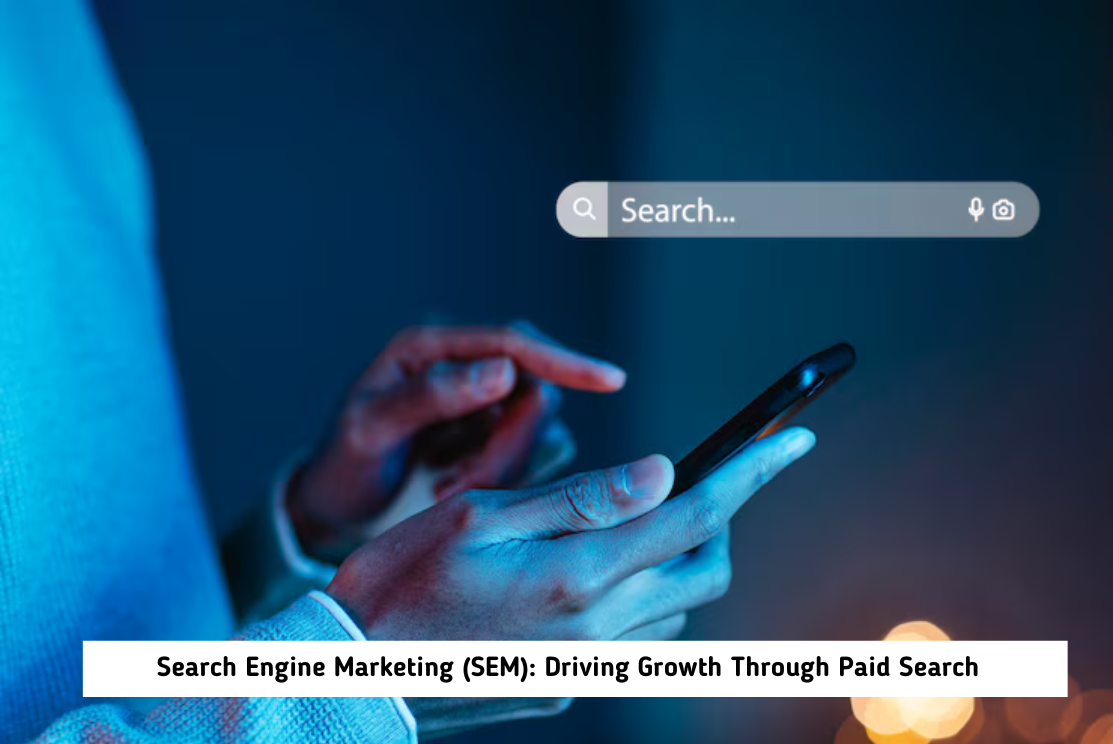In today’s competitive online marketplace, standing out requires more than just having a great product or a stunning website. You need a strategic approach that places your business in front of the right people at the right time. That’s exactly what search engine marketing (SEM) does—it puts your brand in front of potential customers when they are actively searching for what you offer.
What is search engine marketing?
Search Engine Marketing (SEM) is a type of digital advertising strategy used to increase a website’s visibility in search engine results pages (SERPs), mainly through paid advertising. It primarily involves platforms like Google Ads and Bing Ads, where businesses bid on keywords to show ads to users searching for those terms.
Why SEM is Important
- Instant visibility: Unlike SEO, which can take months, SEM delivers fast results.
- Targeted audience reach: Ads are shown to people who are actively searching for your product or service.
- Scalability: You can start with a small budget and scale up as performance improves.
- High-intent traffic: Users coming from SEM often have a higher conversion rate because they are already looking for solutions.

Key Components of SEM
Keyword Research
Choosing the right keywords is essential. These are the search terms your audience types into Google when they are looking for a product or service like yours.
- Focus on commercial or transactional keywords (e.g., “buy running shoes”).
- Use keyword tools like Google Keyword Planner, Ubersuggest, or SEMrush to find high-performing terms.
Compelling Ad Copy
Your ads must be attention-grabbing and relevant to the user’s search.
- Include the main keyword in the headline.
- Highlight your unique value (discounts, free shipping, 24/7 support).
- Add a strong call to action (CTA) like “Shop Now” or “Get a Free Quote.”
Landing Page Optimization
After clicking the ad, users should land on a page that’s directly related to the ad content.
- Match the ad message with the page content.
- Keep it clean and easy to navigate.
- Add trust signals (testimonials, reviews, certifications).
Ad Extensions
These are extra pieces of information that expand your ad and give users more reasons to click.
- Sitelinks—Link to specific pages like “Contact” or “Pricing.”
- Call extensions—Show your phone number.
- Location extensions— Display your physical business address.
Bidding Strategies
You decide how much you’re willing to pay per click or conversion.
- Manual CPC—Set your own bids.
- Automated bidding—Let Google adjust bids based on conversion probability.
- Target CPA or ROAS—Focus on reaching your target cost per acquisition or return on ad spend.
Performance Tracking & Optimization
Constant monitoring helps refine campaigns and increase ROI.
- Track metrics like CTR (click-through rate), CPC (cost per click), conversion rate, and quality score.
- Use A/B testing to compare different versions of ads.
- Pause underperforming keywords or ads and reinvest in top performers.

Benefits of SEM
- Quick traffic generation: You don’t have to wait months to see results.
- Measurable ROI: You know exactly how much you’re spending and earning.
- Highly targeted: Reach users by device, location, time, and language.
- Control and flexibility: Set daily budgets, choose where your ads appear, and stop anytime.
Challenges of SEM
- High competition: Some keywords have expensive CPCs due to competition.
- Click fraud: Bots or competitors may click your ads to waste your budget.
- Ad fatigue: Users may ignore your ads over time if they see them too often.
Best Practices for SEM Success
- Use negative keywords to block irrelevant traffic (e.g., “free” if you’re only offering paid products).
- Segment ad groups by themes or products for better targeting.
- Regularly review search terms reports to refine keyword lists.
- Improve Quality Score by aligning ad text, keywords, and landing pages.
- Retarget users who visited your site but didn’t convert.
Who Should Use SEM?
SEM works for nearly every industry, but it’s especially powerful for
- E-commerce businesses— Promote product listings via Google Shopping.
- Local service providers—Use location targeting to reach nearby customers.
- Real estate and education sectors—Generate high-quality leads.
- Startups—Build brand awareness quickly in competitive spaces.
The Future of SEM
Search engine marketing is evolving with AI and automation. Google Ads now uses machine learning to optimize bids, audience targeting, and ad placements. Responsive search ads, which dynamically test multiple headlines and descriptions, are becoming the norm. Voice search and mobile-first indexing are also influencing how advertisers approach SEM strategies.
As privacy regulations tighten, first-party data will become more valuable in targeting. SEM campaigns will rely more on conversion data from your own website and CRM systems to improve targeting accuracy and ad personalization.
Final Thoughts
Search engine marketing is more than just running ads—it’s about understanding your audience, anticipating their needs, and delivering the right message at the right time. When executed strategically, SEM can be a powerful growth engine for businesses of all sizes. It brings precision, scalability, and speed to your marketing efforts, allowing you to reach potential customers while they are actively making decisions.
Whether you’re looking to increase product sales, generate leads, or drive traffic to your site, SEM provides the tools and insights needed to achieve those goals effectively. With proper keyword research, compelling ad creatives, optimized landing pages, and continuous performance tracking, SEM can deliver measurable, consistent results that align with your business objectives.

